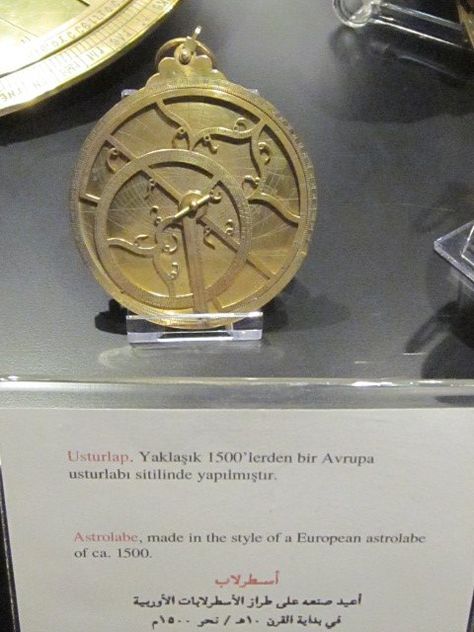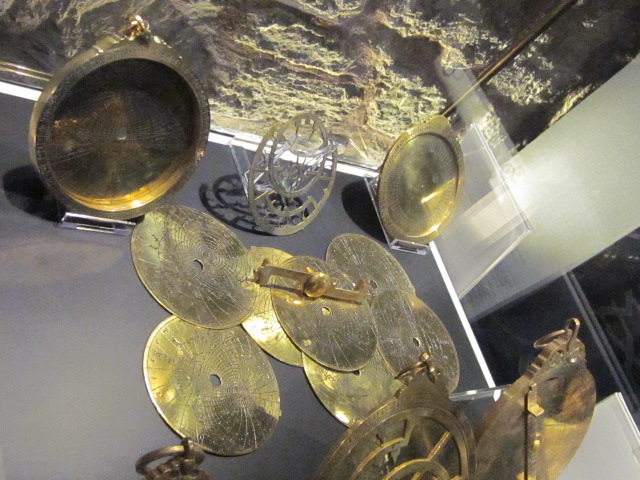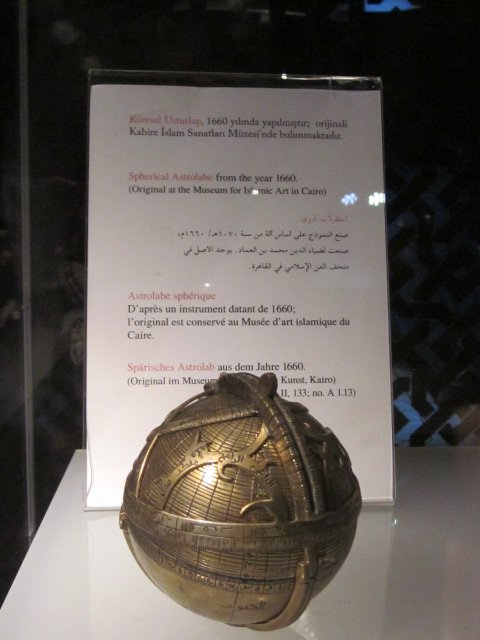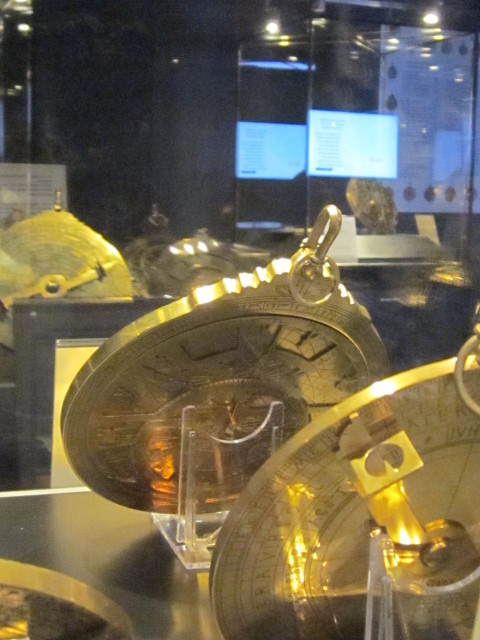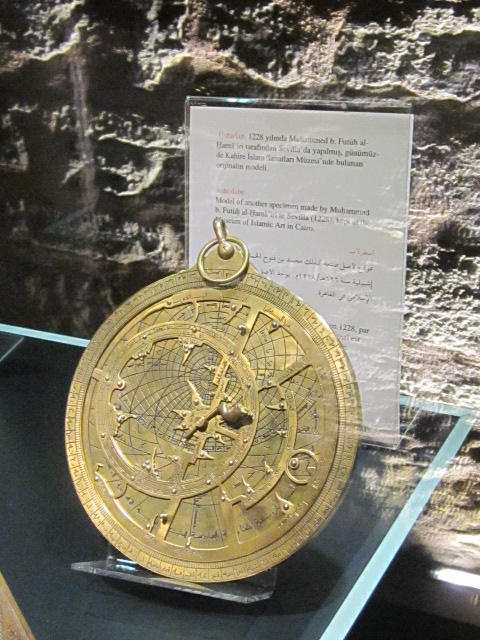My original travel journals were split across August Phoenix Hats and a few other websites. February 2021 marked the 12th anniversary of the beginning of my travels. To celebrate, I’m reissuing my journals as Director’s Cuts, with the complete text as well as larger and additional photos. My Crossroads Tour series details my travels to Florence, Genoa and Istanbul in May 2011.
I’m up and raring to go by 7:30 AM, with three days left and a long list of things to see. I step out onto my balcony and see that the sidewalk across the street has sprouted a rainbow of tables. I watch a grey haired man with a black cap and an elaborate shoe shine kit made of brass. I head downstairs for breakfast and am met by Baha and his brother Erhan, who apologize for the construction noise last night. “No worries,” I say, “not your fault…”

I decide to visit a hamami (Turkish bath) tomorrow as many of the sites I want to see are closed on Mondays. Baha makes a reservation for me at the Gedikpasa Hamami, a 15 minute walk from The Han Hotel. He asks me what my plan today is. “The Science Museum,” I say, “and the Galata Tower.” He asks for my map, which has become our daily routine. “You must go here,” he says, circling a fashion district near the Galata Tower. “And here,” he adds, circling a mosque at the north end of the Golden Horn which I must take a ferry and then a funicular to reach. “It is very important mosque” he says with some intensity. Hmmm… it’s not something I had planned for, but I’ve learned not to question his advice.
I hurry on to the Islamic Science Museum, located in the Topkapi Palace complex. I’m ager to see how it compares to the Galileo Museum in Florence.
Upon entering the building, I find the foyer filled with globes, but unlike the ones in Florence, these are not enclosed in glass. The absence of barriers allowed me to get pretty “up close and personal” with many of the objects i this museum.

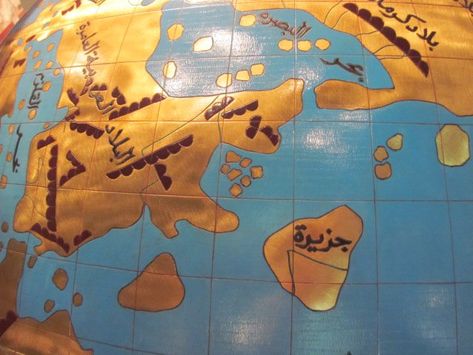



The first room is filled with astrolabes! Case after case, about a third of them are originals.
- Photo #1- Considered to be the most beautiful and advanced astrolabe produced in Islam, dating to the first half of the 11th century.
- Photo #2 – A model of the oldest surviving astrolabe, made in 927 CE. The original resides in the Museum of Islamic Archaeology in Kuwait.
- Photo #3 – An astrolabe disassembled; the discs are charts which would have been changed depending on the longitude the navigator was at.
- Photo #4 – A model of a Spherical Astrolabe, circa 1660. The original resides in the Museum of Islamic Art in Cairo.
- Photo #5 – Based on a specimen attributed to Pope Sylvester II, presumed to have been made in France in 990. The original is housed at the Museo di Storia della Scienza in Florence.
- Photo #6 – The backside of some of these pieces.
- Photo #7 – A model of the astrolabe in its highest stage of development, dating to 1329. The original is housed in the Benaki Museum in Athens.
- Photo #8 – An equatorium dating to the 10th century.
- Photo #9 – A model made in Sevilla in 1228, the original is housed in Cairo.
I continue snapping pictures of the astrolabes and their accompanying signage, but take few notes as I expect that information will be in the museum catalog. Perhaps I’ll even be fortunate enough to find a replica in the gift shop.
The next room is filled with sundials and a water clock (shown below) which was used to calculate the times for prayer. It was the size of a small room, with a face that looked like an astrolabe.
The next room was filled with model siege weapons. SIEGE WEAPONS! Ballistae and a 13th century ramming machine! There are No cases! No ropes! No barriers!
I am furiously fighting the urge to sit down on the floor and play with ALL THE THINGS…
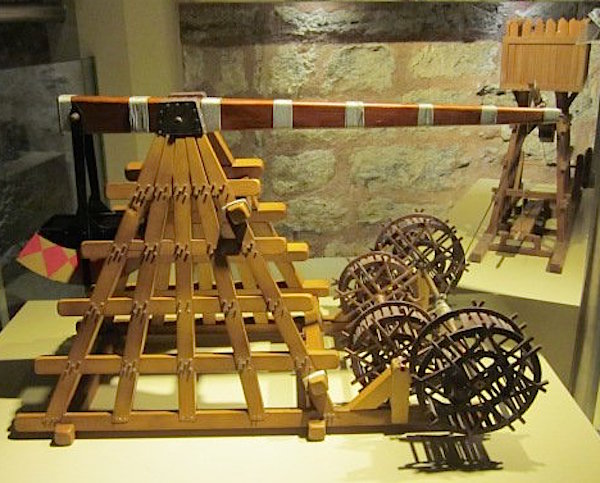
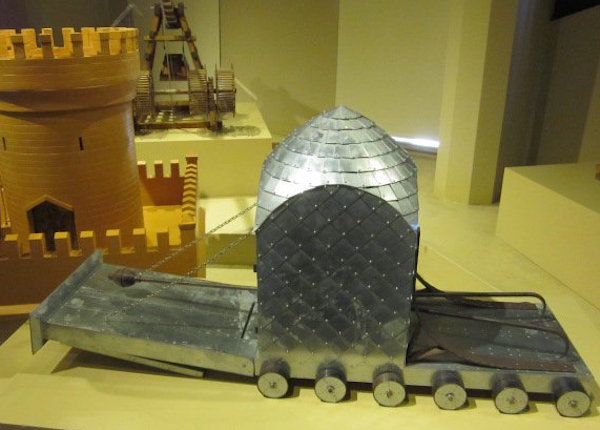



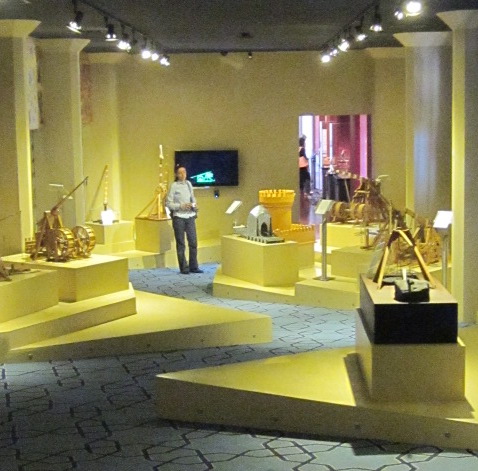
I wander through the next several rooms of weather instruments, steam engines, distilleries, kilns, books and maps, and end up at a model of the Mezquita Mosque in Cordoba, Spain.
- Photo #1 – Surgical instruments of a much finer grade than the ones I saw in Florence.
- Photo #2 – Some of these might be personal grooming aids. The round thing near the center is a chatelaine.
- Photo #3 – A candle snuffer in the shape of a bird. I saw a similar one on Antique Row at the Grand Bazaar.
- Photo #4 – The glass bulbs sitting on a wooden cylinder is a rose water distiller.
- Photo #5 – A steam powered furnace for forging metals. There was a video demonstrating how it worked.
- Photo #6 – The ceiling of the map room.
- Photo #7 – A water pump, the plungers are driven by the water wheel at center, dating between the 13th and 15th centuries.
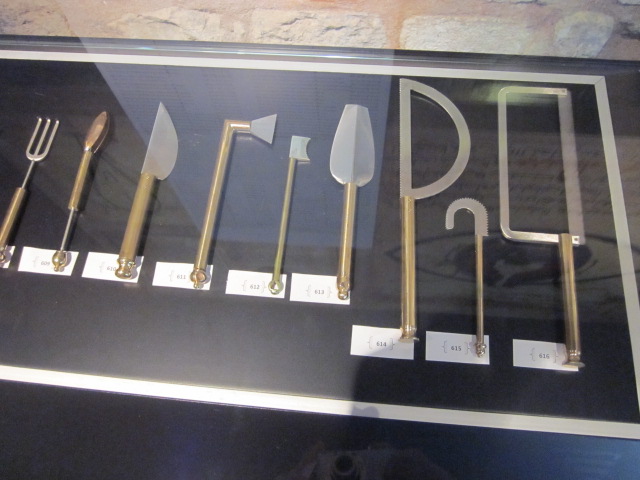
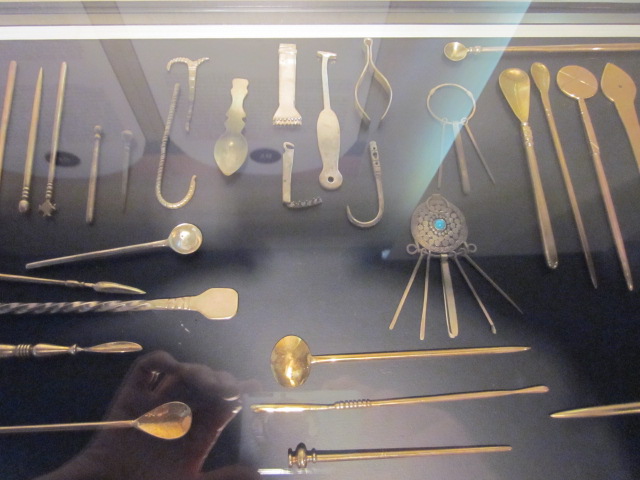




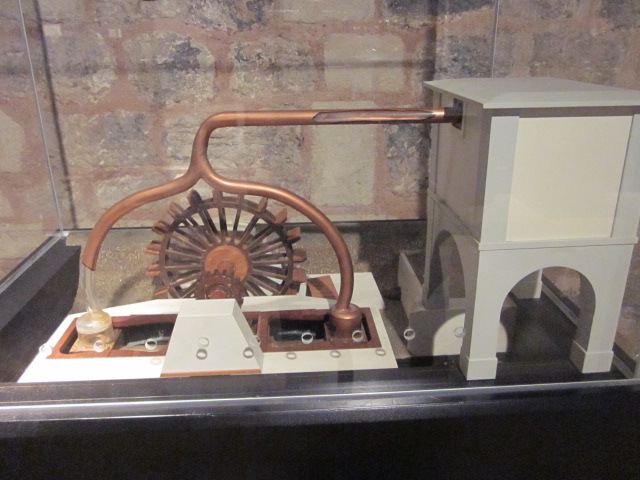
I reach the end.
Where’s the museum store? What do you mean there’s no catalog or gift shop?
ARGH!!! Had I known, I would have taken better notes…
I take a short respite in Gulhane Park to watch the herons building their nests in the tops of the trees. I spy small green parrots flitting through at about head level, on their way to their nests in the hollows of the trees a few feet higher up.
After wandering around the fountains and ponds, I am off to find the ferry…

